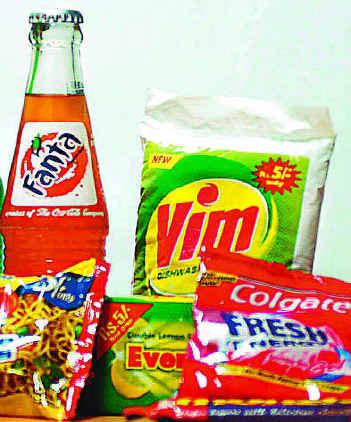Dabur has a penchant for venturing into new spaces, whether it’s soaps or retailing of beauty products. The latest product from the Rs 2,172 crore firm is a malted beverage called “Chyawan Junior” positioned it as a chocolate -flavoured ayurvedic drink. Says K K Rajesh, executive vice-president, Dabur, “It contains herbs to improve the stamina and the chocolate flavour makes it more appealing to children.”
The positioning might well work but the brand is likely to remain a small one. Explains Aniruddha Joshi, analyst at Anand Rathi Securities, “There is a market for the traditional ‘chyawanprash” product so with a tastier option Dabur can perhaps create a niche. However, it’s share is unlikely to be more than 5-6 per cent.”
But Dabur’s not shying away from the competition. By pricing Chyawan Junior at Rs 120 for a 500 gm bottle, it has taken the market leader Glaxo SmithKline Consumer Healthcare’s, Horlicks, head on.
That would seem to be a bold move on the part of Daburgiven that GSK, which has four brands in Horlicks, Boost, Maltova and Viva commands a market share of over 70 per cent. The firm has only improved its share over the years.
Indeed as Nikhil Vora, partner, SSKI Securities observes, “Dabur may have wanted to redefine the pricing somewhat by opting for slightly lower margins but bigger volumes.”
After all, milk product companies such as Nestle and Amul have tried their luck with brands Milo and Nutramul respectively but in spite of having strong synergies and distribution set-ups, they haven’t really done too well.
As Arvind Mahajan, executive director, KPMG, points out, “It’s a relatively difficult market to crack. One reason for this is that because it’s a product for children, you need to get the taste right. It’s not enough if the product is nutritious. Also consumers seem to form a habit of drinking the same product so it takes time to break that habit.”
The malted beverages market, at around Rs1,540 crore (source: AC Nielsen), is crowded with half a dozen players. At around 8 per cent in value terms and less than 3.5 per cent in volumes, the growth has been modest. GSK’s Vice-President, Marketing, Shubhajit Sen, however, pegs the growth at 12-14 per cent in value and 7-9 per cent in volume terms.
The business can be a fairly profitable one though: GSK’s operating margins are in the region of 16.5-17 per cent and Horlicks and its variants are firmly entrenched with a market share of over 50 per cent.
Says Sen, “We have been able to keep the category relevant to customers. We have expanded the usage by associating with exam preparation and dampening the seasonality effect of summers by driving cold consumption with Chocolate Horlicks.”
Sen believes the growth has been driven by both new users as well as higher consumption by existing users. Adds Rajesh, “The introduction of new variants has also helped grow the market. Companies are abandoning the one-size-fits all positioning and generic selling points of the past in favour of targeted messaging based on health benefits. ” Rajesh believes the market can grow at 15 per cent in the future.
What Dabur has going for it is a strong distribution network since it already sells products such as honey and juices. Says SSKI’s Vora, “Dabur’s distribution is probably better than GSK’s and that should help it to do good volumes.”
However, as KPMG’s Mahajan points out, “Typically malted beverages have done better in the eastern and southern markets. So Dabur will need to ensure that it has a good reach in these parts of the country.”
Joshi, however believes that though the availability of milk has never been an issue in the north, Dabur might succeed with a differentiated product. Moreover, the “Chyawan” brand should come in handy though Dabur will need to spend heavily on advertising—typically GSK’s ad spends are about 12 per cent of sales. Rajesh hopes to ‘take a prominent position in the market’ in the next few years. For sure it won’t be easy but it’s well worth a try
Sunday, October 21, 2007
Subscribe to:
Post Comments (Atom)





No comments:
Post a Comment